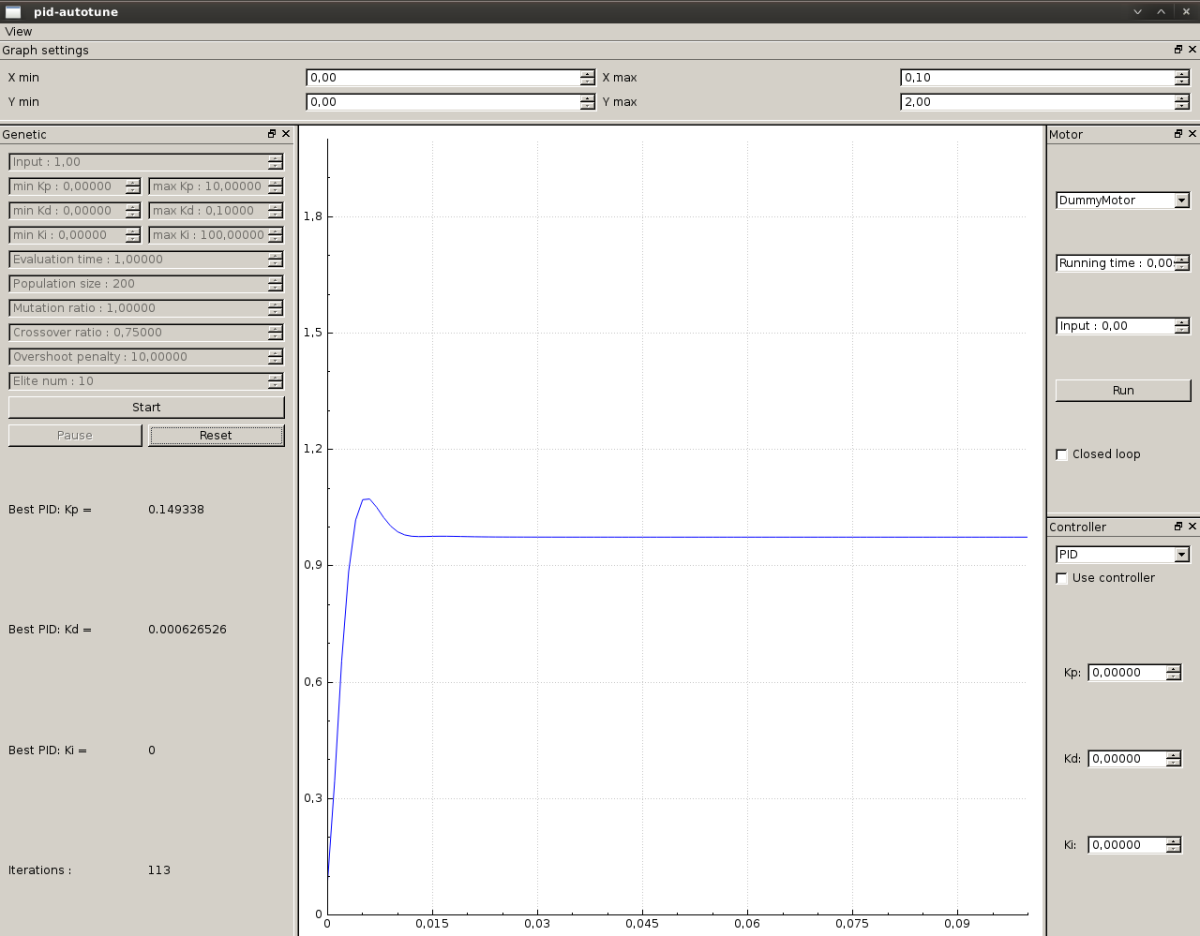Ni Pid Auto Tuning
Standard PID Tuning Methods (tbco 2/17/2012) I. Cohen-Coon Method (Open-loop Test) Step 1: Perform a step test to obtain the parameters of a FOPTD (first order plus time delay) model i. Make sure the process is at an initial steady state ii. Tuning completed? Indicates completion of the autotuning process. You can use this output to determine when to update the PID gains. PID gains out returns the updated PID gain parameters upon completion of the autotuning process. Normal output values are identical to the values in the PID gains input.
Ni Pid Auto Tuning Parts
The Ziegler–Nichols tuning method is a heuristic method of tuning a PID controller. It was developed by John G. Ziegler and Nathaniel B. Nichols. It is performed by setting the I (integral) and D (derivative) gains to zero. The 'P' (proportional) gain, is then increased (from zero) until it reaches the ultimate gain, which is the largest gain at which the output of the control loop has stable and consistent oscillations; higher gains than the ultimate gain have diverging oscillation. and the oscillation period are then used to set the P, I, and D gains depending on the type of controller used and behaviour desired:

| Control Type | |||||
|---|---|---|---|---|---|
| P | – | – | – | – | |
| PI | – | – | |||
| PD | – | – | |||
| classic PID[2] | |||||
| Pessen Integral Rule[2] | |||||
| some overshoot[2] | |||||
| no overshoot[2] |
The ultimate gain is defined as 1/M, where M = the amplitude ratio, and .
These 3 parameters are used to establish the correction from the error via the equation:
which has the following transfer function relationship between error and controller output:
Ni Pid Auto Tuning Software
Evaluation[edit]

Auto Tuning Games
The Ziegler–Nichols tuning (represented by the 'Classic PID' equations in the table above) creates a 'quarter wave decay'. This is an acceptable result for some purposes, but not optimal for all applications.
This tuning rule is meant to give PID loops best disturbance rejection.[2]
It yields an aggressive gain and overshoot[2] – some applications wish to instead minimize or eliminate overshoot, and for these this method is inappropriate. In this case, the equations from the row labelled 'no overshoot' can be used to compute appropriate controller gains.
References[edit]
- ^Ziegler, J.G & Nichols, N. B. (1942). 'Optimum settings for automatic controllers'(PDF). Transactions of the ASME. 64: 759–768.Cite journal requires
journal=(help) - ^ abcdefZiegler–Nichols Tuning Rules for PID, Microstar Laboratories
- Bequette, B. Wayne. Process Control: Modeling, Design, and Simulation. Prentice Hall PTR, 2010. [1]
- Co, Tomas; Michigan Technological University (February 13, 2004). 'Ziegler–Nichols Closed Loop Tuning'. Retrieved 2007-06-24.
External links[edit]
/auto-tune-pro-logic-pro-x-free.html.